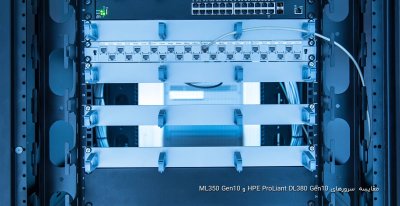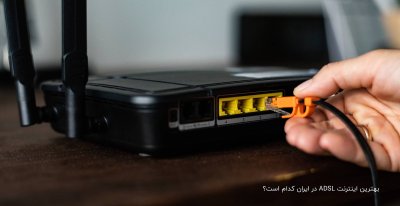با سلام
دوستان عزيز سعي ميكنم كامل مشكلم رو توضيح بدم با مقدمه و در آخر سوالم رو مطرح كنم تا اگه مقدور هست راهنمايي بفرمائيد :
(البته شكلها در اين آموزش از بين رفته جا داره اصلاح بشه)
من بعد از نصب easyphp چراغ چشمك زني نميبينم و در نصب هم هيچ error اي هم دريافت نكردم ورژن نرم افزار هم 2.0.0 هست اما وقتي برنامه را اجرا ميكنم به شكل زير هست : (و ظاهرا درست هست)

و منوي نصب froum به صورت لوكال اجرا ميشه ولي مشكل اصلي من اقسمت دوم عكس هست وقتي طبق آموزش ميخوام جلو برم
و phpmyadmin رو اجرا كنم اون صفحه ظاهر ميشه (قسمت دوم شكل بالا)
در ضمن زماني كه از منوي configuration به گزينه mysql ميرم فايل my.ini به صورت زير نمايش داده ميشه
دوستان لطفا راهنمايي كنند كه چطور مشكل من در اجراي phpmyadmin مرتفع ميشه ؟
با تشكر
دوستان عزيز سعي ميكنم كامل مشكلم رو توضيح بدم با مقدمه و در آخر سوالم رو مطرح كنم تا اگه مقدور هست راهنمايي بفرمائيد :
[ درس اول ]
بعد از اجرا آیکون آنرا در SysTray خواهید دید ( مطابق شکل )
برای اطمینان ار عملکرد آن میبایست یک مربع قرمز چشمک زن را بینید ، در غیر اینصورت سرورتان فعال نیست
موفق باشید
(البته شكلها در اين آموزش از بين رفته جا داره اصلاح بشه)
من بعد از نصب easyphp چراغ چشمك زني نميبينم و در نصب هم هيچ error اي هم دريافت نكردم ورژن نرم افزار هم 2.0.0 هست اما وقتي برنامه را اجرا ميكنم به شكل زير هست : (و ظاهرا درست هست)

و منوي نصب froum به صورت لوكال اجرا ميشه ولي مشكل اصلي من اقسمت دوم عكس هست وقتي طبق آموزش ميخوام جلو برم
[ درس اول ]
ابتدا با اجراي phpMyAdmin يك بانك اطلاعاتي ايجاد كرده تا بتوانيم از آن براي راه اندازي نهايي phpBB استفاده كنيم ( مطابق شكل )
و phpmyadmin رو اجرا كنم اون صفحه ظاهر ميشه (قسمت دوم شكل بالا)
در ضمن زماني كه از منوي configuration به گزينه mysql ميرم فايل my.ini به صورت زير نمايش داده ميشه
کد:
# IMPORTANT
# ${path} is used to specify EasyPHP installation path
# Example MySQL config file for medium systems.
#
# This is for a system with little memory (32M - 64M) where MySQL plays
# an important part, or systems up to 128M where MySQL is used together with
# other programs (such as a web server)
#
# You can copy this file to
# /etc/my.cnf to set global options,
# mysql-data-dir/my.cnf to set server-specific options (in this
# installation this directory is /usr/local/var) or
# ~/.my.cnf to set user-specific options.
#
# In this file, you can use all long options that a program supports.
# If you want to know which options a program supports, run the program
# with the "--help" option.
# The following options will be passed to all MySQL clients
[client]
#password = your_password
port = 3306
socket = /tmp/mysql.sock
# Here follows entries for some specific programs
# The MySQL server
[mysqld]
datadir = ${path}/mysql/data
basedir = ${path}/mysql
bind-address = 127.0.0.1
#Uncomment for use on USB key
#skip-innodb
port = 3306
socket = /tmp/mysql.sock
skip-locking
key_buffer = 16M
max_allowed_packet = 1M
table_cache = 64
sort_buffer_size = 512K
net_buffer_length = 8K
read_buffer_size = 256K
read_rnd_buffer_size = 512K
myisam_sort_buffer_size = 8M
# Don't listen on a TCP/IP port at all. This can be a security enhancement,
# if all processes that need to connect to mysqld run on the same host.
# All interaction with mysqld must be made via Unix sockets or named pipes.
# Note that using this option without enabling named pipes on Windows
# (via the "enable-named-pipe" option) will render mysqld useless!
#
#skip-networking
# Replication Master Server (default)
# binary logging is required for replication
log-bin=mysql-bin
# required unique id between 1 and 2^32 - 1
# defaults to 1 if master-host is not set
# but will not function as a master if omitted
server-id = 1
# Replication Slave (comment out master section to use this)
#
# To configure this host as a replication slave, you can choose between
# two methods :
#
# 1) Use the CHANGE MASTER TO command (fully described in our manual) -
# the syntax is:
#
# CHANGE MASTER TO MASTER_HOST=<host>, MASTER_PORT=<port>,
# MASTER_USER=<user>, MASTER_PASSWORD=<password> ;
#
# where you replace <host>, <user>, <password> by quoted strings and
# <port> by the master's port number (3306 by default).
#
# Example:
#
# CHANGE MASTER TO MASTER_HOST='125.564.12.1', MASTER_PORT=3306,
# MASTER_USER='joe', MASTER_PASSWORD='secret';
#
# OR
#
# 2) Set the variables below. However, in case you choose this method, then
# start replication for the first time (even unsuccessfully, for example
# if you mistyped the password in master-password and the slave fails to
# connect), the slave will create a master.info file, and any later
# change in this file to the variables' values below will be ignored and
# overridden by the content of the master.info file, unless you shutdown
# the slave server, delete master.info and restart the slaver server.
# For that reason, you may want to leave the lines below untouched
# (commented) and instead use CHANGE MASTER TO (see above)
#
# required unique id between 2 and 2^32 - 1
# (and different from the master)
# defaults to 2 if master-host is set
# but will not function as a slave if omitted
#server-id = 2
#
# The replication master for this slave - required
#master-host = <hostname>
#
# The username the slave will use for authentication when connecting
# to the master - required
#master-user = <username>
#
# The password the slave will authenticate with when connecting to
# the master - required
#master-password = <password>
#
# The port the master is listening on.
# optional - defaults to 3306
#master-port = <port>
#
# binary logging - not required for slaves, but recommended
#log-bin=mysql-bin
# Point the following paths to different dedicated disks
#tmpdir = /tmp/
#log-update = /path-to-dedicated-directory/hostname
# Uncomment the following if you are using BDB tables
#bdb_cache_size = 4M
#bdb_max_lock = 10000
# Uncomment the following if you are using InnoDB tables
#innodb_data_home_dir = /usr/local/var/
#innodb_data_file_path = ibdata1:10M:autoextend
#innodb_log_group_home_dir = /usr/local/var/
#innodb_log_arch_dir = /usr/local/var/
# You can set .._buffer_pool_size up to 50 - 80 %
# of RAM but beware of setting memory usage too high
#innodb_buffer_pool_size = 16M
#innodb_additional_mem_pool_size = 2M
# Set .._log_file_size to 25 % of buffer pool size
#innodb_log_file_size = 5M
#innodb_log_buffer_size = 8M
#innodb_flush_log_at_trx_commit = 1
#innodb_lock_wait_timeout = 50
[mysqldump]
quick
max_allowed_packet = 16M
[mysql]
no-auto-rehash
# Remove the next comment character if you are not familiar with SQL
#safe-updates
[isamchk]
key_buffer = 20M
sort_buffer_size = 20M
read_buffer = 2M
write_buffer = 2M
[myisamchk]
key_buffer = 20M
sort_buffer_size = 20M
read_buffer = 2M
write_buffer = 2M
[mysqlhotcopy]
interactive-timeoutدوستان لطفا راهنمايي كنند كه چطور مشكل من در اجراي phpmyadmin مرتفع ميشه ؟
با تشكر










